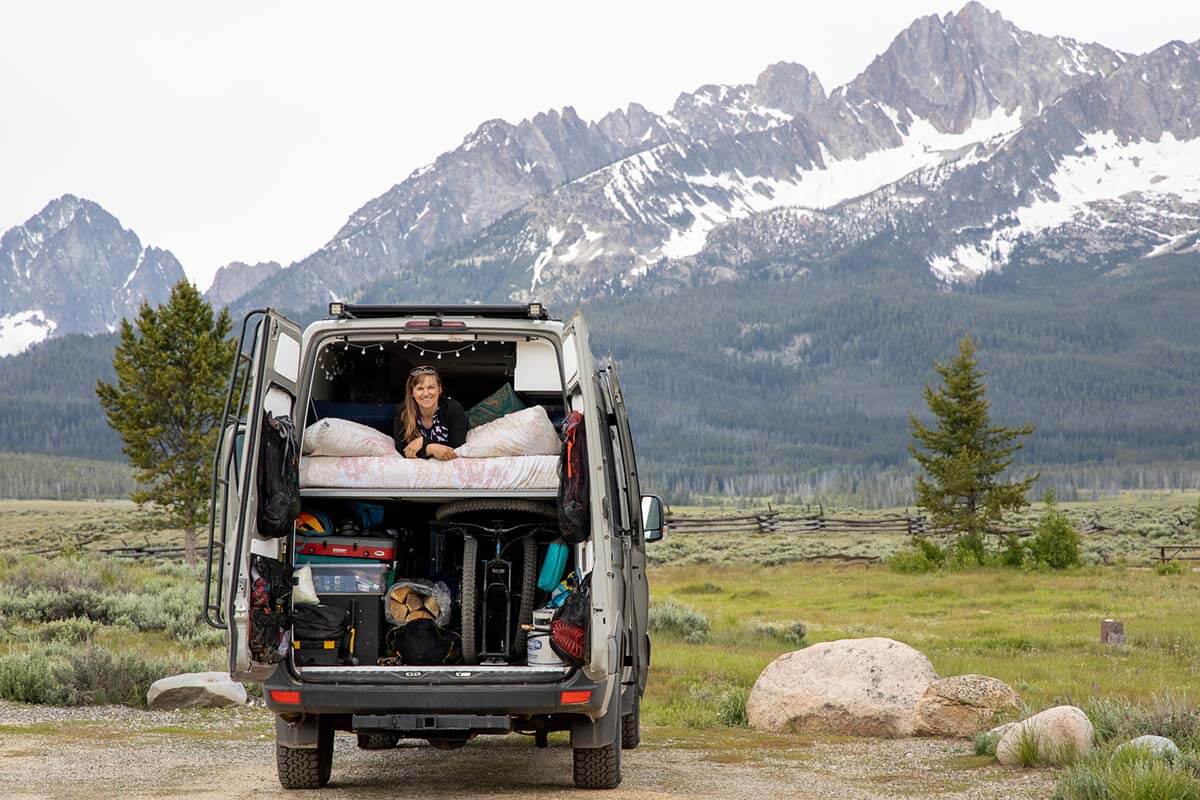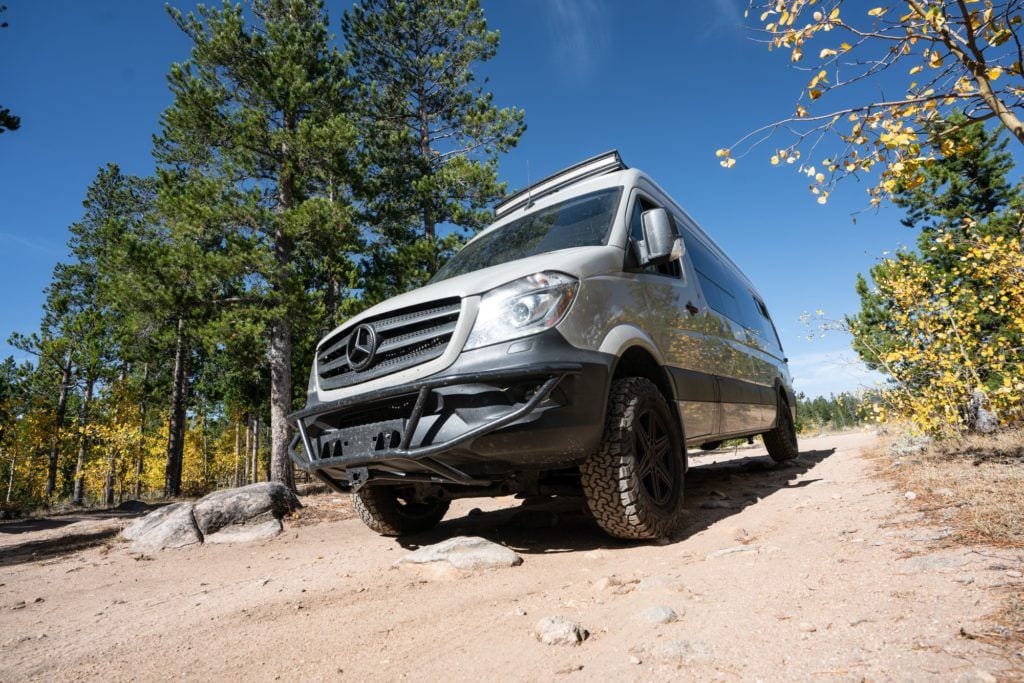Van Weight & Payload Considerations for your Camper Conversion
Learn about van payload and important weight considerations including materials, weight distribution, and more for converting a camper van.

As you start to make decisions about your van conversion, it’s important to have an understanding about your van’s payload and other weight considerations. Van conversions can get very heavy very fast, and if you’re not careful, it’s easy to exceed the maximum recommended weight inside the van which puts extra stress on your suspension, steering, brakes, axles, and transmission. This can lead to serious safety issues and also wears down your van faster.
1-on-1 Van Life Coaching
Ready to get over your analysis paralysis and put your van life dreams into action? Let’s make it happen together. Book a 1-on-1 van life coaching call now and take the first step towards a life of adventure, freedom, and unforgettable experiences.
Learn about camper van payloads for common cargo vans and weight considerations you should take into account during your van build.
Van Weight Terms to Know
Curb Weight
Curb weight refers to the weight of the vehicle empty. This varies between models and standard equipment.
Payload Weight
The vehicle’s payload refers to the total amount of weight the vehicle can carry, including passengers. Payload includes the weight of your conversion and any removable cargo, and varies based on specs such as crew vs. passenger, 4×4, and medium vs. high roof. You can find your vehicle’s payload on the sticker that is typically found inside the driver’s door.
So what happens if you exceed your max payload? Technically it’s not legal, although the chances of you getting caught are slim. If you did get in an accident, this could become an issue with your van insurance company. You’ll also notice that the van might not accelerate or brake as efficiently and your fuel efficiency will be lower.
Gross Vehicle Weight (GVW)
Gross Vehicle Weight (GVW) refers to curb weight + payload weight.
Gross Vehicle Weight Rating (GVWR)
Gross Vehicle Weight Rating (GVWR) is the maximum allowable weight of your van. To find out the total weight of your van, you can use weigh stations off the highway, a CAT Scale location, or certain recycling centers.
Common Van Payloads
Depending on the exact year and model of your van, the payload varies significantly, so check directly with the manufacturer to determine the exact payload of your van. Here are examples of payload ranges for common cargo vans:
Mercedes Sprinter
144″ Wheelbase, High Roof: 3,726 – 6,823 lbs
170″ Wheelbase, High Roof: 3,395 – 6,823 lbs
170″ Extended Wheelbase, High Roof: 3,296 – 6,823 lbs
Ford Transit
250 Medium Roof: 3,500 – 3,900 lbs
250 High Roof: 3,100 – 3,500 lbs
Ram ProMaster
136″ Wheelbase 1500 High Roof: 3,760 lbs
136″ Wheelbase 2500 High Roof: 4,130 lbs
Balancing Weight Across Your Van’s Chassis
It’s also important to consider how weight is balanced across the chassis as you plan the layout of your van because you don’t want one side of your van to be significantly heavier than the other. Over time this can wear on the suspension and even the tires.
A general rule of thumb is to put water storage on one side of the van and batteries/electrical system on the other. These things are heavy and putting them on opposite sides of the van will help balance out your overall total weight.
Another best practice is to keep your weight towards the floor over the rear axle for a lower center of gravity so the van doesn’t feel top-heavy. This will result in better handling and a smoother ride on those curvy mountain roads.
The other area you need to pay attention to weightwise is your build materials. Materials like tile, granite, and excessive use of wood will add weight to the van and have the potential to push you over your recommended max payload.

What Happens if your van is too heavy?
While you want to avoid exceeding your van’s maximum payload by appropriately planning your conversion and using as lightweight materials as possible throughout your build, if you find your van is approaching the maximum payload after loading it up with all of your stuff, you can also consider upgrading your suspension.
In my second Sprinter van, I had 25 gallons of water and a very heavy battery bank in my garage and found that the back of my van was sagging due to all of that heavy weight weight. To fix this, I installed the Van Compass suspension package which drastically improved how the van drove and handled roads.
For more information about my second Sprinter’s suspension upgrade, you can watch the full YouTube video and read the detailed review of the suspension upgrade on the blog.

Resources Section
- Review of My Second Sprinter’s Compass Suspension Upgrades
- Keeping Van Conversion Weight Under Control
- 2020 Ram ProMaster Payload Chart
- Mercedes Sprinter Specs
- 2021 Ford Transit Specs
Do you have questions about the importance of your van’s payload? Share your questions, tips, and experiences in the comments below and make sure to sign up for our van life newsletter!


Hi! Great resource and lovely presentation. Thanks! We are building up a 170″ for a fam of 4 and I’m really torn on the 2500 or 3500 payload. Figuring 50 gal of water, solar plus batteries, 4 adults or 2 adults and 2 kids, prob a Aluminess bumper with bikes and spare, framing everything interrior out of aluminum but will have some wood surfaces… without having the total spec I feel like a 3500 is better safe than sorry. Thoughts?! We plan on getting an upfitter involved at some point but going to just enjoy a big box on wheels this summer as a good deal on a van came up and until we get in line with a builder so can’t really get their take.
From the Southern Cascades of Oregon,
Adam and family.
Definitely get the 3500. You may be shocked at how quickly the weight increases. I thought I was safe, safe, safe with my GMC Savana – I thought I put maybe 1500 lbs into it – actually I put over 3000 lbs into and was just over payload – even with a 1-ton. (They apparently have less payload than some others.)
Many Loves Truck stops will have a place where you can weigh your rig.
Designing a well balanced, driving and braking van is no different from the thoughts automotive engineers go through when designing a well handling race car.
1. Keep the mass, all of it, vehicle and equipment, as low as possible. A low center of gravity makes for a better and safer handling vehicle.
2. A lower weight vehicle can brake sooner than a heavier vehicle. That can be critical in panic stops.
3. Keep as much mass as possible within the wheelbase. Avoid overhanging too much equipment out back.
4. Right to left balance is important, as the author already mentioned, both for safety reasons and premature wear of suspension components and tires.